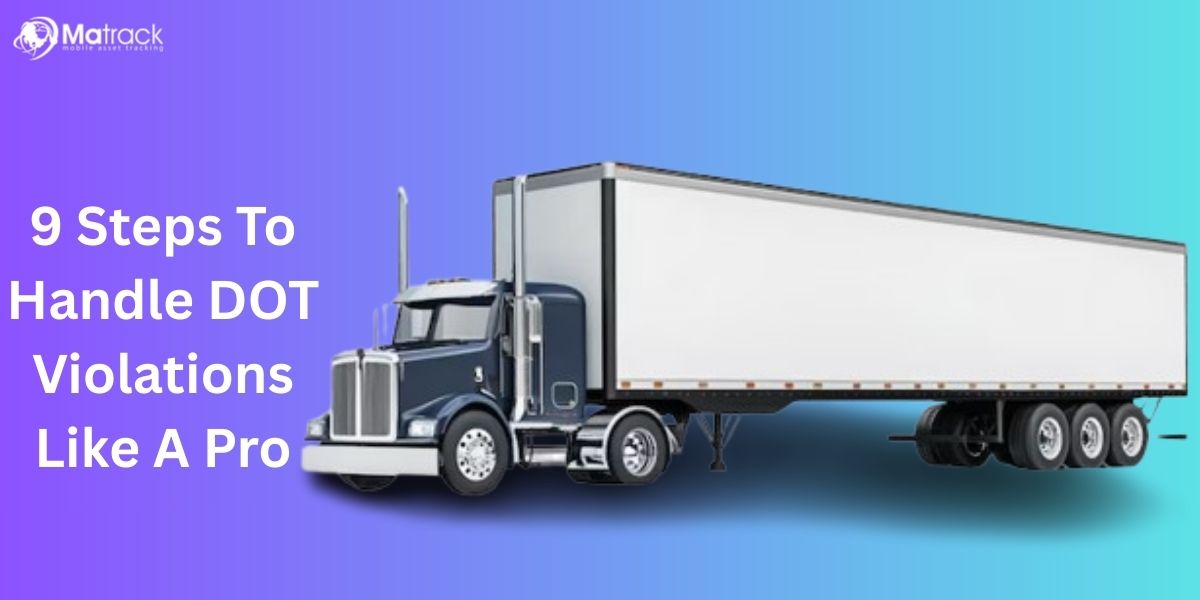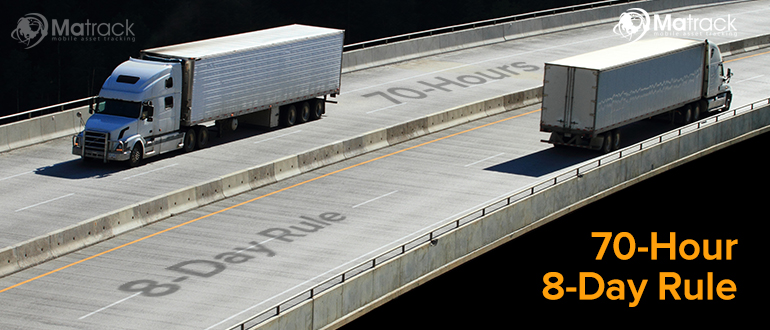Key Takeaways:
- DOT violations can lead to fines, legal trouble, and increased inspections if not handled properly.
- To address a violation, identify the issue, review records, take corrective action, and submit a response.
- Dispute inaccurate violations through FMCSA’s DataQs system or pay fines to clear your compliance record.
- Prevent future violations by training drivers, maintaining vehicles, and regularly auditing compliance records.
What Happens When You Get a DOT Violation?
When a DOT violation is issued, the impact depends on the type and severity of the infraction. Some violations result in immediate action, while others accumulate over time, affecting a company’s overall compliance standing.
Immediate Consequences
- Minor Violations – Issues like incomplete log books or missing paperwork are recorded but may not require immediate corrective action.
- Serious Violations – Infractions such as driving without a valid CDL, exceeding hours of service limits, or operating an out-of-service vehicle may lead to immediate penalties, including the vehicle or driver being placed out of service.
Effect on Compliance Records
- The violation is recorded in the company’s Compliance, Safety, and Accountability (CSA) score system.
- Repeated or severe violations can increase a company’s risk profile, leading to more frequent inspections and possible intervention from FMCSA.
Financial and Operational Impact
- Fines and Penalties – The cost of violations varies but can range from hundreds to thousands of dollars.
- Legal Issues – Certain violations, such as drug and alcohol infractions, can lead to license suspension or legal action.
- Higher Insurance Costs – Companies with poor compliance records often face increased insurance premiums.
Long-Term Business Risks
- Too many violations can result in a Conditional or Unsatisfactory safety rating, which may limit business opportunities.
- A poor compliance history makes it harder to attract clients or maintain contracts with companies that require strict adherence to DOT regulations.
Read more: DOT Hours of Service (HOS) Rules
How To Handle DOT Violations Like A Pro?
1. Identify the Violation and Its Severity
DOT violations fall into different categories, each carrying different consequences:
- Critical Violations – These pose an immediate safety risk, such as driving under the influence, falsified records, or serious maintenance failures.
- Acute Violations – Serious non-compliance issues that indicate negligence, like failing a drug test or operating a CMV without a CDL.
- Non-Critical Violations – Lesser infractions, such as incomplete logs or minor equipment issues, which can add up and affect compliance scores.
What to Do Next
- Review the violation notice and inspection report carefully.
- Determine if the issue is related to the driver, vehicle, or company policy.
- Assess its impact on Compliance, Safety, and Accountability (CSA) scores.
2. Review Inspection Reports and Documentation
Once the violation is identified, verify the details to ensure there are no errors. Common sources of documentation include:
- Roadside inspection reports
- Driver logs and electronic logging device (ELD) records
- Maintenance and repair records
- Drug and alcohol test results
What to Do Next
- Compare the inspection report with company records.
- Check for inaccuracies that may warrant a challenge.
- Gather evidence, such as maintenance logs or time-stamped photos, if disputing the violation.
Check out: 8 Levels of DOT Inspections
3. Address Immediate Safety Concerns
Some violations require urgent action before a vehicle or driver can return to service.
- Out-of-Service Violations – If a vehicle is placed out of service due to mechanical failures, repairs must be completed and documented before it can be used again.
- Driver Compliance Issues – If a driver is cited for a safety-related violation, such as exceeding hours of service (HOS), they may need to be temporarily removed from duty.
- Record-Keeping Corrections – If the issue relates to logbook errors, missing documents, or outdated records, corrections should be made immediately.
What to Do Next
- Schedule necessary repairs and update maintenance logs.
- Ensure drivers comply with suspension or corrective training if required.
- Review compliance policies to prevent repeat offenses.
4. Respond to the DOT Notice
Ignoring a DOT violation can lead to increased penalties or even revocation of operating authority. Each violation comes with a deadline for response.
How to Respond
- Acknowledge the Violation – Submit a response within the specified timeframe.
- Provide Supporting Evidence – If there’s an error or mitigating circumstances, include relevant records.
- Submit a Corrective Action Plan (CAP) – For more serious violations, DOT may require a formal plan detailing steps to prevent recurrence.
What to Do Next
- Ensure the response is submitted via the FMCSA portal or direct contact.
- Consult a transportation compliance expert for severe violations.
5. Dispute the Violation (If Justified)
Not every violation is valid. If you believe there was an error, you have the right to contest it.
Ways to Challenge a DOT Violation
- DataQs System – This FMCSA online portal allows companies to request reviews and corrections.
- Administrative Review – Submit additional evidence proving compliance at the time of inspection.
- Legal Appeal – In cases with severe penalties, an attorney may be needed to formally appeal the decision.
What to Do Next
- Submit a challenge through the FMCSA DataQs system.
- Include clear documentation, such as maintenance logs, timestamps, or corrected reports.
6. Pay Fines and Resolve Penalties
If the violation is upheld, fines and penalties must be addressed promptly.
How to Handle Penalties
- Verify the Amount Due – Check the official notice for details.
- Make Payments on Time – Use FMCSA-approved payment methods.
- Request Payment Plans – Some fines allow structured repayment to ease financial burden.
What to Do Next
- Confirm payment deadlines and retain proof of payment.
- Address any corrective actions required before resuming operations.
7. Implement Corrective Actions to Prevent Future Violations
Preventative measures reduce the risk of repeat violations and improve overall compliance.
Key Preventative Steps
- Driver Training Programs – Educate drivers on HOS regulations, ELD usage, and best safety practices.
- Routine Vehicle Inspections – Conduct regular pre-trip, post-trip, and scheduled maintenance checks.
- Internal Compliance Audits – Monthly or quarterly self-audits can identify and address non-compliance issues early.
- Drug & Alcohol Testing Policies – Enforce pre-employment, random, and post-incident testing.
- Improved Documentation – Maintain clear, accessible records for inspections and audits.
What to Do Next
- Assign compliance oversight to a designated manager.
- Invest in fleet management software for tracking vehicle and driver performance.
8. Prepare for Future DOT Audits and Inspections
Once a violation occurs, your company may be flagged for future inspections. A proactive approach ensures you’re ready.
How to Prepare for Audits
- Organize Documentation – Keep up-to-date logs, maintenance reports, and compliance records.
- Train Staff on Audit Procedures – Ensure employees understand what is required during an inspection.
- Perform Internal Mock Audits – Simulating DOT audits helps uncover potential compliance gaps.
What to Do Next
- Regularly check CSA scores for risk indicators.
- Use FMCSA’s Safety Management Cycle (SMC) to maintain compliance.
9. Foster a Compliance-First Culture
A strong culture of compliance reduces the risk of future violations and fosters safer operations.
Best Practices for Long-Term Compliance
- Stay Informed on DOT Regulation Changes – Regularly review FMCSA updates.
- Use Compliance Management Software – Platforms like Samsara or Omnitracs can track violations, HOS compliance, and vehicle safety.
- Encourage Open Communication – Drivers should feel comfortable reporting compliance issues without fear of retaliation.
What to Do Next
- Subscribe to FMCSA bulletins and attend compliance training sessions.
- Create an anonymous reporting system for internal safety concerns.
How to Clear DOT Violations?
Clearing a DOT violation from a company’s record requires both immediate corrective actions and long-term compliance improvements.
Correct the Issue Immediately
- If the violation involves a mechanical issue, ensure that repairs are completed and documented.
- If it was a paperwork or logbook issue, update records and ensure future compliance.
Request a Review If the Violation Was Incorrect
- Use FMCSA’s DataQs system to dispute errors in CSA scores.
- Provide documentation proving the issue was corrected or never should have been cited.
Submit a Safety Rating Upgrade Request
- If a company’s rating drops to Conditional or Unsatisfactory, FMCSA allows companies to request a safety rating review.
- Submit a Corrective Action Plan (CAP) detailing how compliance issues have been addressed.
Monitor and Improve CSA Scores
- Regularly check CSA scores to ensure violations are being addressed.
- Reduce future violations by training drivers, maintaining vehicles, and enforcing compliance policies.
Keep Clear and Organized Records
- Ensure all inspections, repairs, and compliance measures are properly documented.
- Organized records make it easier to clear violations and prevent repeat offenses.
Conclusion
Managing DOT violations requires prompt action to address issues and prevent them from recurring. Staying on top of compliance through regular training, audits, and accurate record-keeping helps minimize risks and keeps operations running smoothly.
Clearing violations involves correcting mistakes, disputing inaccuracies when necessary, and maintaining a strong focus on safety and regulatory requirements. Companies that follow best practices can avoid costly penalties and maintain a positive reputation in the industry.


